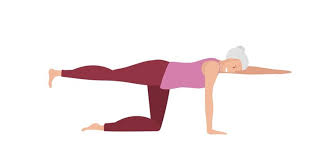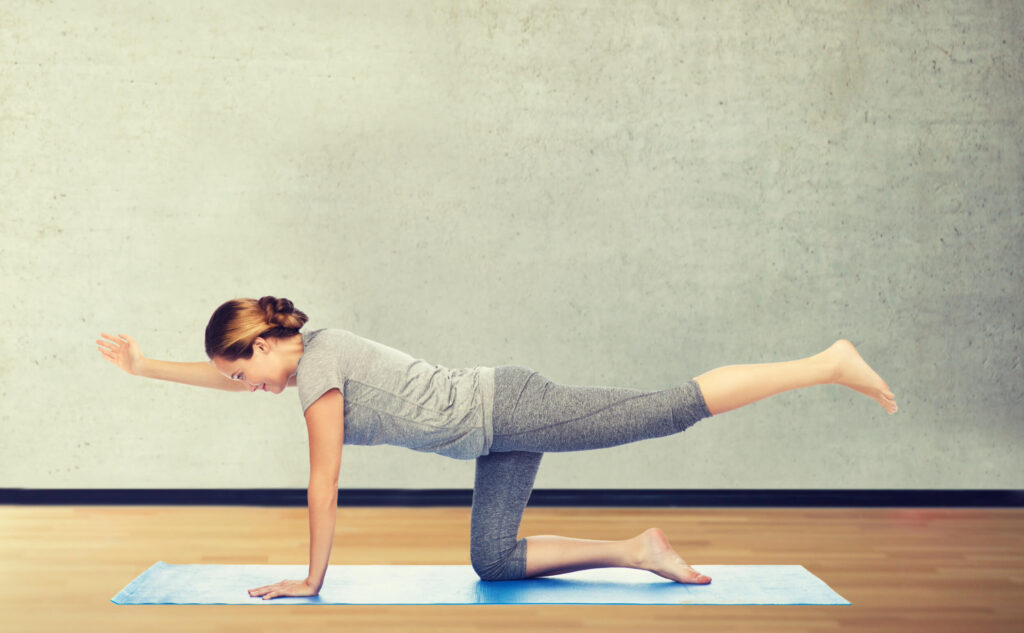5 Excellent Health Benefits of Balancing Table Top Pose
- Blog
- /
- Yoga Poses and Sequences
- /
- 5 Excellent Health Benefits...

Balancing Table Top Pose: An Introduction
The Balancing Table Top Pose, known as Dandayamana Bharmasana in Sanskrit, falls under the category of restorative postures. The name is derived from the Sanskrit words danda (stick), yamana (balancing), bharma (table), and asana (pose). This posture mimics the form of a table and challenges your balance as you refine it. It’s a great starting point for those new to yoga, offering numerous benefits to help manage daily life stresses.
How to Do the Balancing Table Top Yoga Pose
- Start Position: Begin in a kneeling position.
- Hand Placement: Place both palms flat on the floor in front of you, aligning them under your shoulders.
- Body Lift: Lift your body to rest on your knees and palms.
- Spinal Alignment: Push your tailbone backward and your neck forward to stretch and lengthen your spine.
- Leg and Arm Raise: Inhale slowly and lift your right leg parallel to the ground. Then raise your left arm straight into the air.
- Balancing: Find your balance and maintain this position for one to two minutes, breathing calmly and focused.
- Return to Start: Lower your leg and arm back to the floor, returning to the kneeling position. Repeat with the other leg and arm.

Table Pose Benefits :
- Helps in Creating Body Balance: The pose promotes physical balance through muscle coordination, achieving equilibrium physically and mentally.
- Strengthens the Core: Engages the core and abdominal muscles, providing a solid foundation for core workouts and strength building.
- Improves Posture: Alleviates back pain and postural issues by stretching the spine, supporting better posture and reducing discomfort.
- Enhances Focus and Awareness: Requires mental concentration and breath awareness, refining mental capabilities and improving overall awareness and concentration.
- Establishes Harmony and Mindfulness: Balances physical and mental states, reducing anxiety and promoting positive mental health through mindfulness and stress relief.

Precautions and Contraindications Of Table Top Pose
- Injury Considerations: Avoid the pose if you have recent knee or wrist injuries.
- Avoid Overarching: Do not bend or arch your torso excessively to prevent discomfort or injury.
- Pregnancy: Pregnant women should avoid this pose due to the challenge of maintaining balance.
- Neck Alignment: Keep your neck straight to avoid headaches.
- Support for Comfort: Use a soft blanket under the knee for additional support if needed.
- Practice Within Limits: Ensure that you only perform what is physically feasible to avoid injury and ensure a beneficial practice.
Conclusion
The Balancing Table Top Position offers a range of benefits, from improving balance and core strength to enhancing mental focus and posture. It’s a fundamental pose that serves as a gateway into more advanced yoga practices. As you integrate this pose into your routine, you’ll experience increased positivity, calmness, and balance in your life. To deepen your practice and unlock your full potential, consider joining a 200 hour yoga teacher training or 300 hours yoga teacher training india. Explore more about rejuvenating retreats with our ayurveda retreat in kerala or Yoga Retreat in India.








